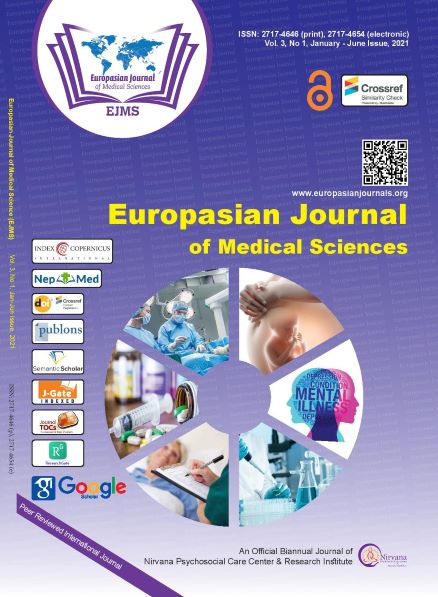Misconception and Effect of Menstruation (Chhaupadi) and Delivery on Women’s Health in Bajura, District Nepal
Abstract
Background: Chhaupadi is the old unscientific system in mid and far
western parts of Nepal. Reproductive age women were considered unclean
during the menstrual and delivery period. Invisible cultural taboos and
practices were prevailing in each and every household. The objective of the
study is to assess the associated factors affecting during Chhaupadi and
delivery practice with their health outcome.
Methods: The cross-sectional descriptive study was conducted amongst
175 reproductive age women in Bajura districts of Nepal, by using
multistage random sampling. Both qualitative and quantitative methods
was used. All the data were entered in Ms excel and exported into
SPSS 16.0. The necessary descriptive and inferential statistics was used
for quantitative analysis and thematic analysis was done for qualitative
analysis.
Results: More than one third (38.9%) of the participants were in the age
group 20-29 years. Almost all the participants were from Hindu religion.
The majority (91%) of participants know about the Chhaupadi system.
Almost (74%) of the participants were staying in the Chhaupadi hut during
menstruation. Similarly, (78.3%) of the respondents were mentioned, they
did not like the Chhau system and never like to continued. There is a
significant association between health effect in women and the Chhaupadi
system (p < 0.031).
Conclusion: We conclude that the larger proportion of women in Bajura
District still believes in old unscientific tales and Chhaupadi practices
which lead to the different health problems.
Copyright (c) 2021 Authors

This work is licensed under a Creative Commons Attribution 4.0 International License.
All articles published in EJMS are licensed under the Creative Commons Attribution 4.0 International License (CC-BY 4.0). The author/s as the copyright holder will retain the ownership of the copyrights without restrictions for their content under the CC-BY 4.0 license, and allow others to copy, use, print, share, modify, and distribute the content of the article even in commercial purpose as long as the original authors and the journal are properly cited. No permission is required from the author/s or the publishers. Appropriate attribution can be provided by simply citing the original article.
On behalf of all the authors, the corresponding author is responsible for completing and returning the agreement form to the editorial office. More information about the terms and conditions, privacy policies, and copyrights can be found on the webpage of the Creative Commons license privacy policy. https://creativecommons.org/licenses/by/4.0/




